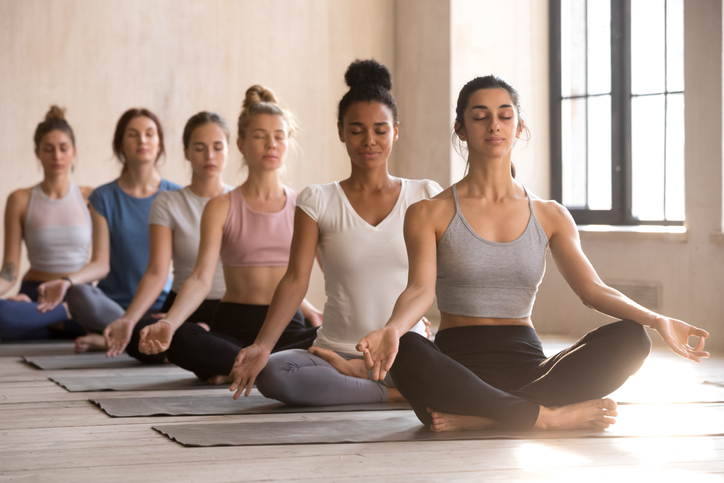Articles, In the Press, Resources, Shannon Stephens, Yin, Restorative and Meditation, Yoga Medicine® News
Yin Yoga for “The Gap”
By Shannon Stephens for Yoga Medicine®.

In meditation “the gap” is described as the silent space between thoughts. It’s a deeper layer of consciousness that for many of us, myself included, can be hard to find because of the layers upon layers of thoughts, memories, and judgments that seem to run on an endless loop. Brain stuff can be challenging to work with because we give our thoughts and emotions so much power. But, as with any sort of training, the more you practice, the easier it is to drop into a calmer, more spacious way of being.
Yin yoga offers a direct route to the gap, with opportunities for many mini meditations within a 60-minute class.
Finding the Gap
The gap is a simple concept to understand, but applying the practice requires that we relearn stillness. We’re masters of distraction; skilled at running from ourselves. The first step is to create conditions for the mind to be still. Physical stillness is the rock star of the yin practice, so check!
The second step is to recognize the gap on an experiential level. To get there, simply focus on these 2 anchor points during your practice:
- Breath
- Sensation
- Breath
When we become conscious of the breath, we are present in a way that allows us to be an observer rather than a doer. Conscious breathing can pause or at least slow the process of thinking. We’re fully awake, training the mind to watch the body’s own natural rhythms. If you’re anxious or restless, try diaphragmatic breathing. Diaphragmatic breathing or belly breathing can trigger your body’s natural relaxation response. When you breathe deeply, you can slow your heartbeat, lower your blood pressure, and calm your nervous system. Too much might make you sleepy. Find the right dose for the moment you’re in and be willing to play with the breath throughout your practice.
Sensation
The comforts and distractions of modern-day living make it easy to be completely disconnected from our bodies. When we focus on sensation in a yin pose, we can reacquaint ourselves with the flesh and bone of the physical body, and the subtle vibration and current of the energetic body. Because a key ingredient
to a yin practice is time, make sure that you set yourself up in a way that you can stay and be still. Props can decrease pressure in the joints and allow for a more relaxing experience. Once you’re situated, observe sensation that’s close to the skin, and sensation that’s deep. Notice what’s speaking the loudest and notice subtle sensation. Keep going inward and investigate what’s there. Pain is a one-way ticket out of any pose. See if you can distinguish discomfort from pain, and restlessness from a real need to shift.
With all this focused awareness on breath and sensation, you might have forgotten about the gap entirely. That’s great! It means you probably fell right in. Each time you practice this way notice the part of you that notices. This is what meditation is all about. We remove the layers of self (the ego) to get to our true essence. Some might call this the soul – I like to think of it as home.
“Discover inner space by creating gaps in the stream of thinking. Without those gaps, your thinking becomes repetitive, uninspired, devoid of any creative spark, which is how it still is for most people on the planet.” — A New Earth by Eckhart Tolle












